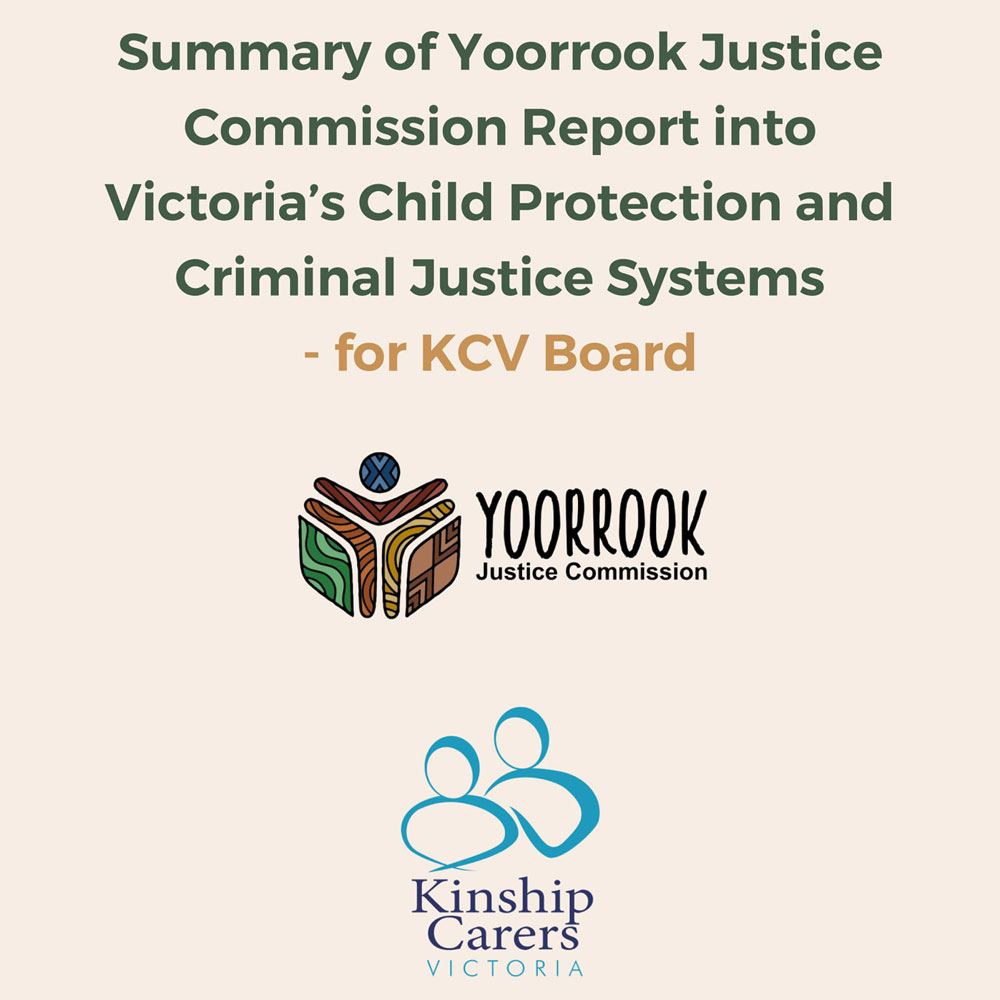
Summary of Yoorrook Justice Commission Report
The second report of the Yoorrook Justice Commission focuses on the past and ongoing systemic injustice First Nations communities experience within Victoria’s child protection and criminal justice systems.
Structure of the report
The report is divided into seven parts:
Part A includes the Letter of Transmission, Chairperson’s foreword, and a brief introduction to the report’s methodology and terminology.
Part B includes an Executive Summary, list of recommendations and key facts.
Part C examines the historical foundations of the child protection and criminal justice systems. It explains how current injustices, including systemic racism and human and cultural rights violations created by these systems, are not just historical, but continue to persist today with critical impacts on First Peoples families and communities.
It then goes on to discuss matters for Treaty in relation to child protection and criminal justice. In particular, Yoorrook finds that the transformation necessary to end the harms that the child protection and criminal justice systems continue to inflict on First Peoples can only be addressed through self-determination involving the transfer of power, authority and resources to First Peoples via the treaty process.
Part C concludes by examining consistent themes in evidence to Yoorrook that span both the child protection and criminal justice systems, including accountability and transparency, cultural competence and responsivity, and compliance with cultural and human rights obligations. Whole of government recommendations to address these issues are made.
Part D examines critical issues in the child protection system. It begins with a short overview of some of the key policies, laws and human and cultural rights that are engaged by this system. It then examines the pathway into, through and beyond child protection with chapters on early help, child removal, out-of-home care, permanency and reunification. The authors make findings on critical issues and recommendations for urgent action in each chapter.
Part E adopts a similar approach to the criminal justice system. Following a brief overview, each of the major parts of that system are considered: Victoria Police; the bail system; youth justice; courts, sentencing and classification of offences; and Victorian Prisons. Key systemic injustices are identified, findings made, and recommendations for urgent action put forward.
Part F considers other issues that have arisen during this stage of Yoorrook’s work, including legislative barriers to Yoorrook properly fulfilling its truth-telling mandate. Yoorrook outlines legal problems which mean that Yoorrook cannot guarantee that confidential information that First Peoples and others share will be kept confidential once Yoorrook finishes its work. It also discusses barriers to members of the Stolen Generation and others who have been or are currently subject to child protection orders telling their truth. The report makes recommendations to resolve these issues.
Part G contains appendices to the report, including a list of witnesses and a glossary. The report provides further information relating to the child protection and criminal justice systems.
To download/read the full summary of the Yoorrook report, click here.

